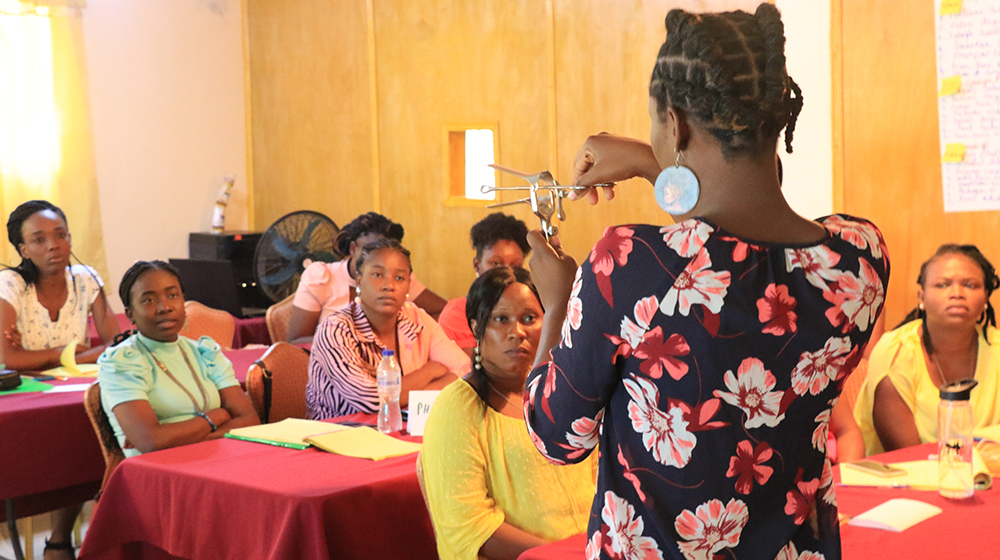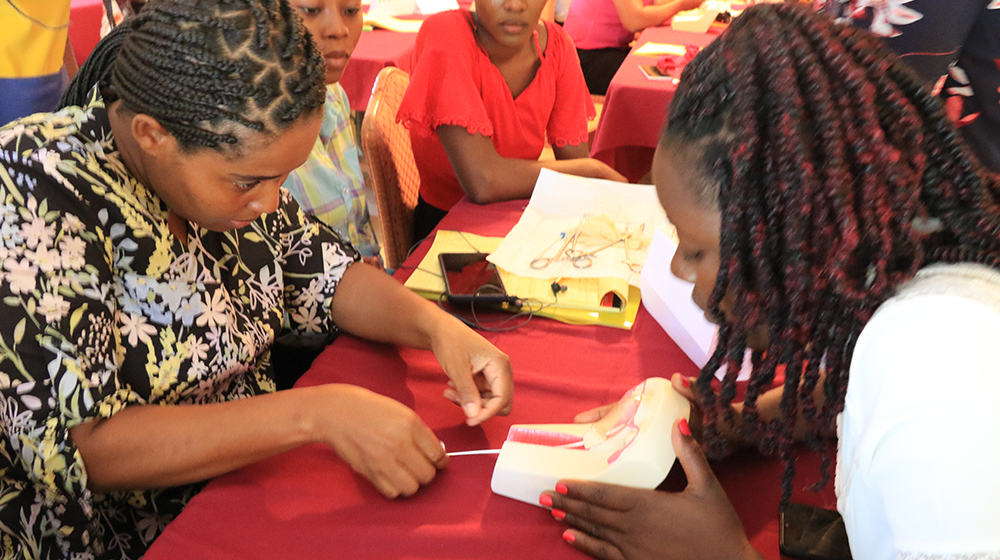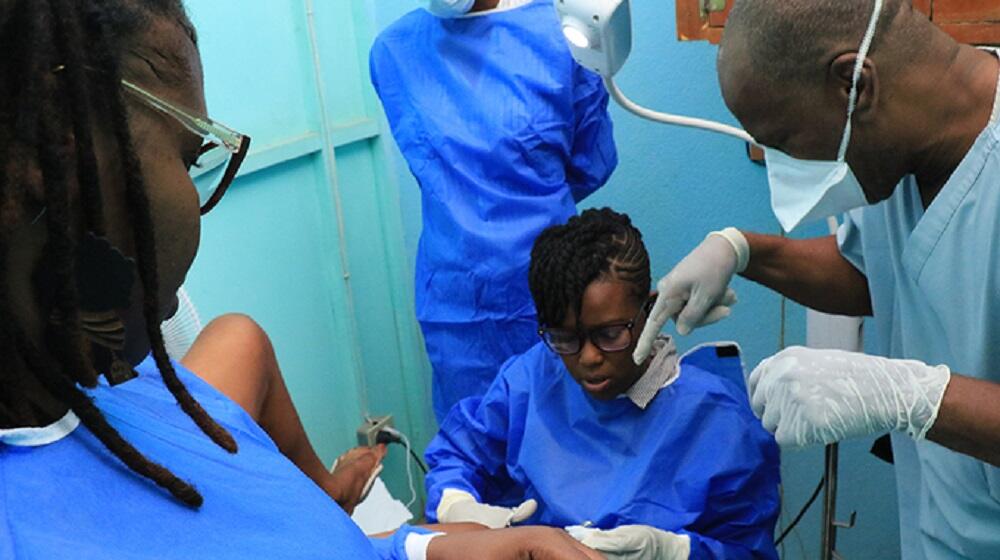Port-au-Prince, June 16, 2022 --- At the initiative of UNFPA and in support of the Ministry of Public Health and Population, the obstetrician-gynecologist, Emmanuel Mégie André of FOSREF, and the UNFPA's family planning program officer, Yves Thermidor, organized a training session on the insertion of the intrauterine device (IUD) in Hinche (Centre), from June 13 to 17, and implants in Fort-Liberté (Nord-est) from June 20 to 24, 2022.
22 nurses and midwives participated in the first session of this training in Hinche.
Improve access
These training sessions are generally intended to contribute to improve the population's access to long-term contraceptive methods (IUDs and implants), indicates the program officer for family planning, young people and adolescents at UNFPA, Yves Thermidor.

The dynamic
The workshop combined theory (2 days) and practice (3 days). The learning techniques applied: brainstorming, Powerpoint presentation, sharing of experience, group work, demonstration, practice on a mannequin, role plays, discussions, practical activity on beneficiaries.
The practical phase
The practical phase consisted of inserting the IUD on a dummy, an anatomical model, so as to master the steps, specifies the main trainer.
“The anatomical model is a material that looks like the woman’s pelvis and contains the vagina, womb, fallopian tubes and ovaries,” adds Emmanuel Mégie André. It is this form that they reproduced in a hospital environment from June 15, 2022.
Participants used a speculum to grasp the cervix and hold it during insertion.

In the practical sessions, we learned how to insert the IUD material, explains a nurse-midwife who works at Marmont hospital, Hinche locality.
“The first thing is to educate the client,” emphasizes Esther Florestal. "You have to pass the speculum first and then do the vulvar asepsis," she says. "The speculum is a material used to pull the cervix of the matrix towards you", notes Florestal. Because the material must be inserted into the matrix of the person, she declares.
“Our health facilities already offer family planning services,” she notes. “It is good to be able to offer other methods like the IUD. We will have to promote it. We are also going to replicate this training in our structures”, concludes Esther Florestal.
hope
“We hope that the knowledge and skills acquired by these 22 nurses and midwives will allow women in their localities to adopt, according to their choice, the IUD as well as all the methods, free of charge and under good conditions”, estimates Yves Thermidor.
The IUD
An IUD is a contraception method inserted into the uterus by a healthcare professional. It is a contraceptive device, most often in the shape of a “T” which measures around 3 cm in length. The doctor or midwife inserts it into the uterus.
The IUD ends in a string which is cut very short by the doctor or midwife at the time of insertion. It is long enough to allow the doctor or midwife to remove the IUD with small forceps. This piece does not interfere with the partner during sex.

Capacity building
In addition to supporting the Ministry of Public Health and Population in the supply of contraceptive inputs up to 75%, UNFPA facilitates capacity building of providers for the supply of long-term family planning methods.
The Ministry of Public Health and Population prioritizes IUD training, a strategy that would allow people to access an additional long-acting method with a 12-year duration of action.
The indicators
The departments “Centre” and “Nord-Est”, which host these training sessions, have a fertility rate among adolescent girls of 14% and 11% respectively.
Haiti has a family planning prevalence of 32% with unmet needs of 38%. These two departments have an unmet need of around 35% for the Centre and 38% for the Nord-Est.
On the other hand, their total fertility rate is higher than the national average, that’s to say 3.6 for “Nord-Est” and 4.2 for “Centre”.
According to the Centre's reproductive health program manager, Engreend Pyram, it is important to increase contraceptive prevalence in the country, and particularly in Plateau Central, as part of a strategy to reduce the maternal mortality rate.
In Haiti, 10% of girls under 19 are already fertile, that’s to say 8% already have at least one child, and 2% are pregnant.
With a maternal mortality rate of around 529 per 100,000 live births, according to EMMUS VI, Haiti remains the country in the region with the highest rate.
Text and photos: Vario Sérant
Texte traduit du Français à l’Anglais par :
Jhunie Laura Ganème et Michael Johnson Leger,
Officiers communautaire


